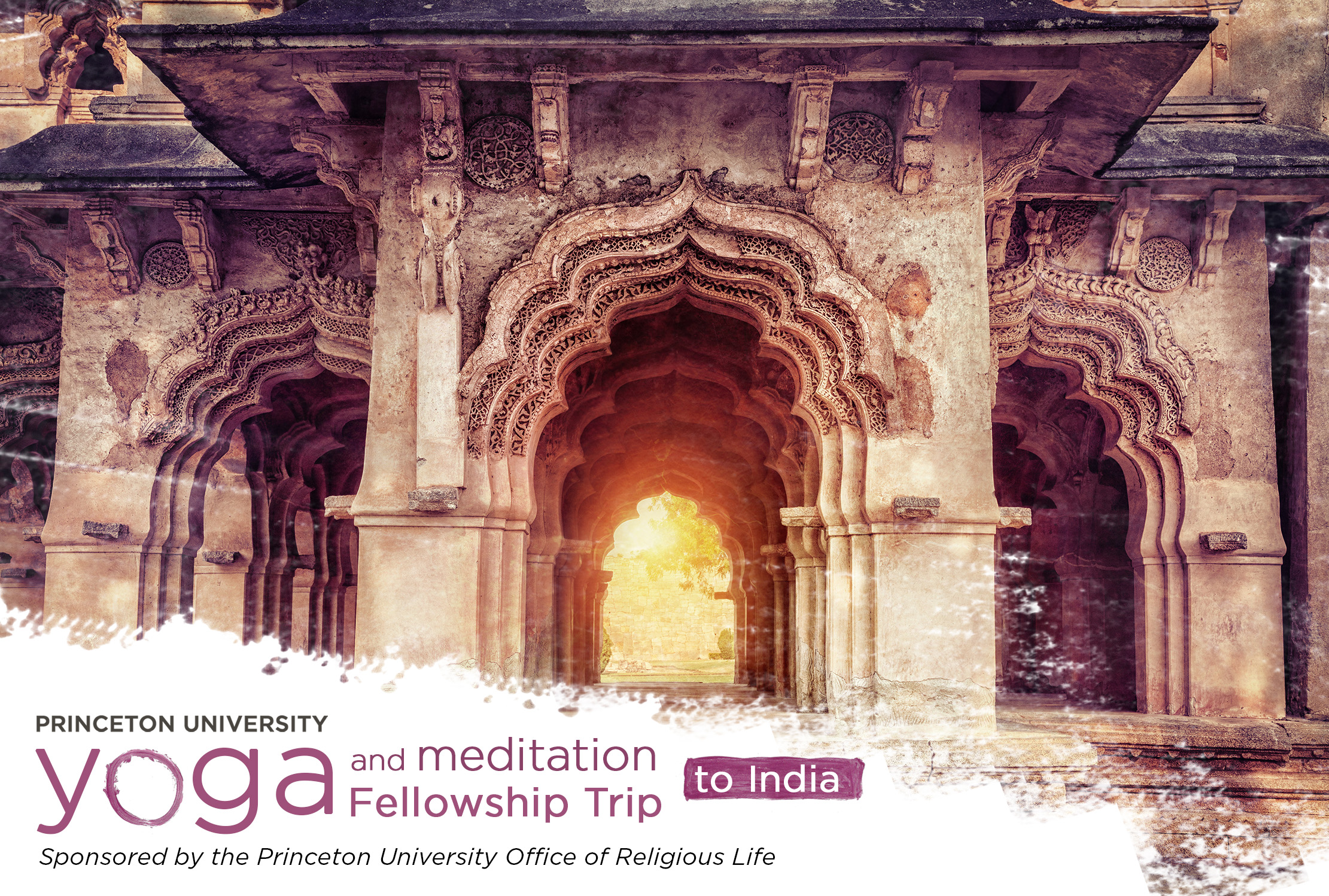The inaugural cohort of the ORL Yoga and Meditation Fellowship in 2017-18 was unforgettable. Now we’re excited to keep the momentum going … and take our exploration to new levels … with our 2nd cohort!
The Office of Religious Life is sponsoring an immersive learning trip to India, combining three themes: yoga history, yoga principles, and yoga as a framework for activism and environmental justice. The trip includes visits to selected sites in Myrsore, Rishikesh, Haridwara, Mumbai, and rural Maharashtra. Fellows will take part in regular yoga practice and meditation, discussion circles around texts and articles, excursions, guest speakers, and hands-on engagement with social activism. Fellows will also take part in follow-up activities and commitments back on campus.
Spaces are limited, and we welcome applications from all current undergraduate and graduate students who are enrolled for full-time study at Princeton in the 2019-2020 academic year. Strong preference will be given to students returning to study in both the Spring 2020 and Fall 2020 semesters.
Don’t miss out on this amazing opportunity. Remember — the application must be submitted by October 11, 2019.











You must be logged in to post a comment.